Sheffield D-Day veteran’s remarkable sketch of invasion painted as drama unfolded around him


Leslie Dowson’s haunting artwork shows the immense fleet amassed in the Channel, guns blasting, as pale light ripples across the waves. The skies above are thick with barrage balloons, and planes soar ominously overhead.
Incredibly, it was sketched as he sat aboard a landing craft, listening to the deafening roar of shells crashing through the air, using only the ink from his fountain pen and a small pot of water.
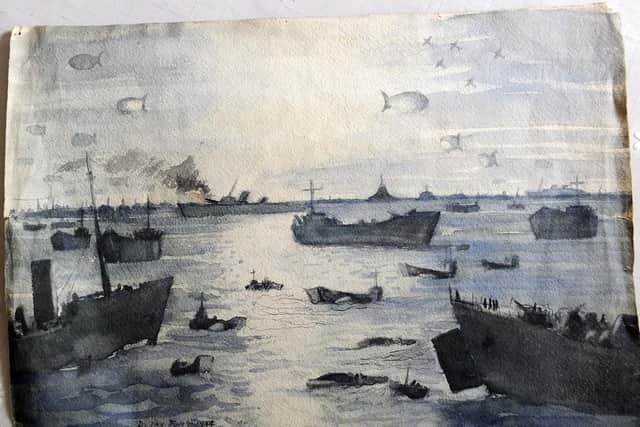

Advertisement
Hide AdAdvertisement
Hide AdIt is the most striking of more than 100 sketches and paintings by Leslie, who grew up in Crookesmoor and later lived in Beauchief, chronicling his wartime experience as he made his way across Europe.
The master sign writer and decorator, who served as a corporal with the Pioneer Corps during the war, sadly died in 2003, aged 88.
But, for his proud daughter Mary Littlewood, the treasure trove of wartime sketches he left behind are a vivid reminder of what he and his comrades endured to secure our freedom.
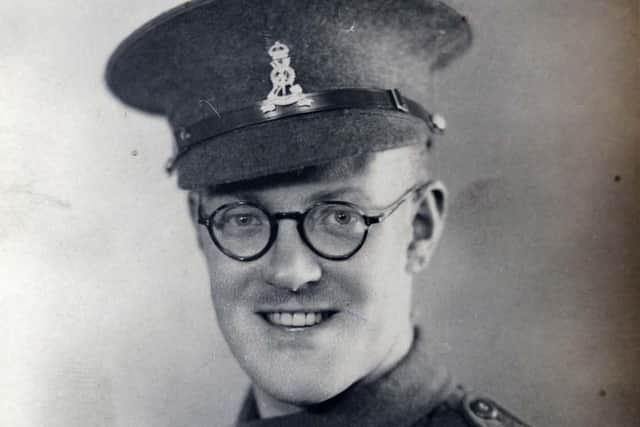

Advertisement
Hide AdAdvertisement
Hide AdThey are particularly precious to her given how loath he was to talk about his war, not wanting to dredge up painful memories.
“He didn’t talk to my mother or my brother and I much about the war because of how horrific it was out there,” said Mary, aged 70, of Waterthorpe.
“That’s why the paintings and sketches he made during that time are such treasured possessions.
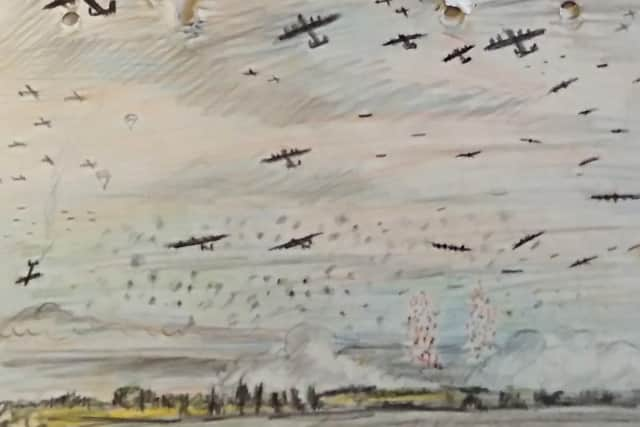

Advertisement
Hide AdAdvertisement
Hide Ad“They really bring home what he went through and it makes me think how if he and the rest of the troops hadn’t done what they did the Germans could have taken over and things would have been very different.
“I’ve been down to Portsmouth quite a lot and when I go there I look out to sea and try to picture what it would have been like crossing that day with all the ships, and the aircraft going over. It’s hard to imagine, but having that painting really helps.”
The scenes Leslie depicted range from the drama of shells exploding on the beach and an Allied plane strafing a road, forcing a German vehicle into a ditch, to the heart-wrenching sight of freshly dug graves for both Allied and German soldiers.
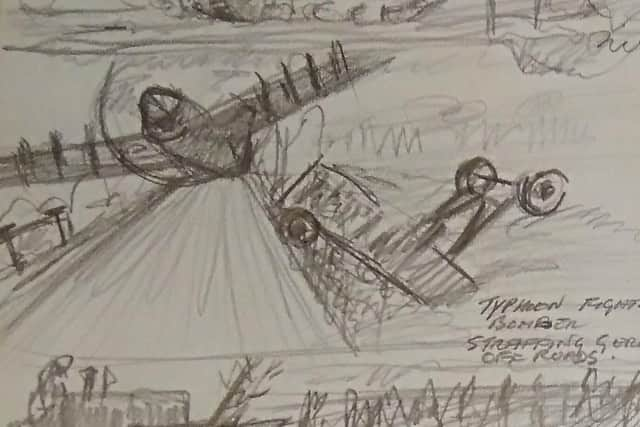

Advertisement
Hide AdAdvertisement
Hide AdThey also document the minutiae of life during the war, from the foxholes which provided protection for troops to the mess tins they used, and the brief captions often show his keen sense of humour, such as where he describes a hole in the ground as a ‘bed - sitting room - also used for bathroom when wet’.
Leslie, who landed on Juno Beach, has previously told how he had no idea what he was involved in even as he set sail that day, such was the secrecy surrounding the operation.
It was only when he heard what he described as the ‘almighty roar’ of the Black Prince cruiser beginning the bombardment of the German defences that he realised he was involved in the invasion.
Leslie was initially stationed at RAF Dishforth, guarding the runways being used by Allied bombers, after being called up in 1940.
Advertisement
Hide AdAdvertisement
Hide AdIn the build-up to D-Day, he was posted to the 24th airfield construction group which was responsible for laying emergency landing strips.
It was while working on a landing strip near the Arromanche beachhead shortly after the landings that he witnessed the dramatic sight of 500 Lancaster bombers laying siege to the German headquarters in Caen, which he also captured on paper.
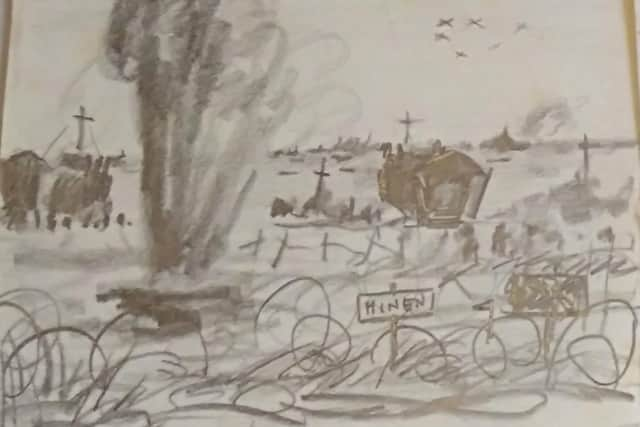

He returned to England to train for the planned invasion of Japan, which was scrapped after the atom bombs dropped, and then guarded German prisoners at a camp near Worksop before being demobbed early in 1946 and returning to work in Sheffield.
Mary recalls how the walls of their family home were covered with her father’s paintings, with the D-Day sketch standing out amidst depictions of Sheffield landmarks or bucolic scenes from holidays and day trips.
Advertisement
Hide AdAdvertisement
Hide AdLeslie met his future wife Stella during the war while he was stationed near Dunstable, where she was making parts for Lancaster bombers after being moved from her home city of London due to the Blitz, and they tied the knot in 1947.